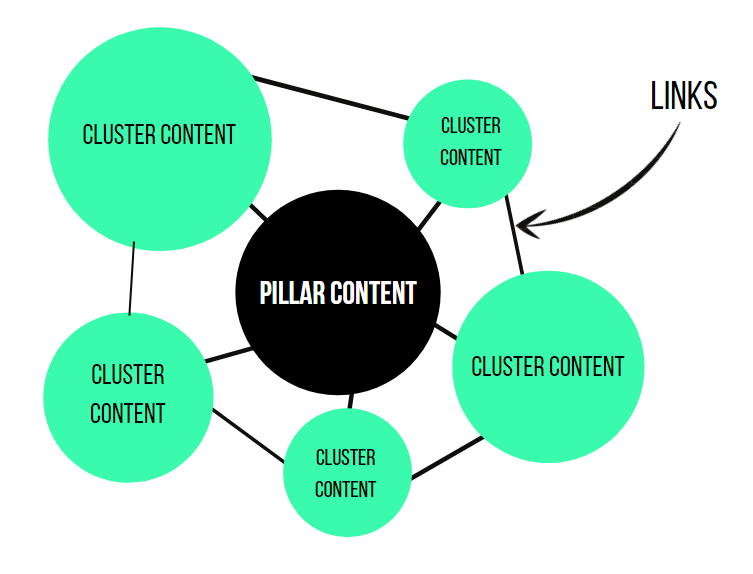10 Ideas for Updating Old Content
How to
Refreshing old content frequently is a great strategy to improve your SEO efforts and the overall performance of your website. Updating your old content can increase website leads, improve conversions, and grow organic search views.
HubSpot analyzed their content and found 76% of their monthly blog views, and 92% of their monthly blog leads came from old blog posts. In fact, 46% of their monthly blog leads came from just 30 blog posts. That is interesting because they publish 200 blog posts every month and have nearly 6,000 total posts on their blog. It was their ‘light bulb moment,’ and it should be yours too.
In this blog post, you’ll learn why you should update old content, and get tips that will help you do it. We also recommend that you read the article how to optimize old content on a website.
- 1. Update Old Content Frequently
- 2. Why Updating Content?
- 3. 10 Tips to Update Your Old Content
- Bringing It All Together
1. Update Old Content Frequently
On my blog, Knowledge Enthusiast, I publish two articles a week – every Tuesday and Thursday – like clockwork. How often do I update my old content? Not enough. I don’t have a team like Neil Patel does to update historical blog posts. His team updates 90 articles a month. And that’s ok. But if you have a small team or you are doing it all by yourself like me, you can update old content in between creating new stuff.
There are different levels of updating content. You can adjust a couple of sentences and update old stats. Or to make your content even more compelling, you could rewrite a lot of articles, a handful of paragraphs, and add images and videos, improve internal linking or add a couple of valuable keywords. There is no metric or magic bullet on how much content you should update. It is important to ensure updating historical content becomes part of your daily, weekly, or monthly routine. As a content creator, ingrain it into your habits.
2. Why Updating Content?
Updating old blog posts with new content and images can increase organic traffic by as much as 106%. Additionally, 51% of companies say updating old content has proven the most efficient tactic implemented.
Freshness is one of the factors search engines use to judge the quality of content. Fresh content has been an important ranking factor in Google’s search algorithm since Google announced its freshness update in 2011. Making updates to your historical content changes the way your content shows up on the results page because Google displays the publish date. A more recent date makes a better impression. Searchers are more likely going to click on something that was published a couple of days or weeks ago compared to months or years.
Furthermore, more frequent updates of your content will encourage Googlebot to index your website more often. A Googlebot has a limit on the number of pages it’s able to crawl every day giving priority to newer content. Finally, your updated content will provide you with an opportunity to re-promote it via social media, potentially leading to additional social shares and inbound links.
Ready to give your older content a second life? Here are some things you should do.
3. 10 Tips to Update Your Old Content
Let’s dive into how you can best update your historical content with some tips and tools. Some of these steps are easier to make happen right away, whilst others may require more time and thought.
3.1. Choose what Content to Update First
Not all of your content is successful. Content diminishes its value over time. One of the best approaches is to determine what content is getting the most traffic. Use Google Search Console, Google Analytics, and marketing automation tools such as Netpeak Spider, HubSpot, Marketo, Eloqua, or Exponea.
Look at your stats in Google Analytics and determine what content is performing and not performing. For starters, take a six-month date range. It is most likely, the content that is performing well is optimized for long-tail keywords. Long-tail keywords perform better with search engines because they are very specific and less competitive, so it is easier to rank for them.
Here are several approaches that you can take when you’re in two minds about what content should be updated first:
- Single out the posts that rank well for keywords that are being searched and with the right intent. Go to Google Search Console to check the average monthly searches and average search volume for your targeted keywords. When there is a decrease in these two metrics, you should review your keyword strategy.
- Manually comb through the old posts to find content with outdated data.
- Find posts that can be optimized with high-frequent and missed keywords.
One of the most complicated parts of updating outdated content is knowing how often to do it. Netpeak Software Growth Hacker Kosta Bankovski recommends monitoring any optimization changes every two months. During this period of time, you’ll see what efforts bring results and what practices lead to nothing and should be put aside.
3.2. Update or Delete Thin Content
Thin content is content with little or no value. Write at least 300 words, and make sure your articles provide depth. Here are some questions you should consider when fixing thin content:
- Do you really need to add more words? If you can get the message across in a few hundred words or through images or videos, it may be enough. For example, one of my blog posts: the right way to Google yourself [infographic] is one of my shortest posts (only 500 words), but it is one of my most popular blog posts. It helps that I included an infographic. Don’t add words just to add words. Remember, a picture is worth a thousand words. Think of the user experience instead. People would rather have the answer to their questions right away.
- Does your article or page add value? Looking back at it now, the piece of content you created a while back provides little to no value now. If that is the case, you should delete it or set up a 301 redirect to the most relevant URL on your website. Remember about the crawl budget – don’t squander it.
- Does the old article or page exist on your social media pages? If your outdated content exists on your social media profiles, you should delete the social media post that originally promoted it. For example, you don’t want people to review your social media feeds and see the old content. Also, if you have written about Google+, you should delete it since the social media network is dead now.
3.3. Remove Duplicate Articles or Pages
Duplicate content creates problems for search engines and affects your SEO strategy badly. Since duplicate content is information within one or several domains which is entirely identical, it may pose the range of threats:
- Indexing issues. If there is a lot of duplicate content on the website, it creates a ‘mirror effect,’ and your targeted content may get lost and not indexed by robots due to the limited crawl budget.
- Improper distribution of internal and external PageRank.
- Issues with showing up in the SERP.
3.4. Identify and Fix Broken Links
A broken link is a link that leads to the nonexistent web page, file, or image. In such cases, a server should be set up to return 404 or 410 response codes. Broken links create a poor user experience, and search engines don’t like giving users a bad experience.
3.5. Simplify Content
Remove fluff words and avoid using complex words that impair perception of information. If your sentence sounds awkward, you are probably using passive voice. A passive voice uses more words and can be vague. Using an active voice results in shorter, sharper, and easier to read sentences. Active voice helps your reader gain a stronger connection to your call to actions.
3.6. Make Content more Actionable and Helpful
Actionable content is content that can immediately be acted upon by readers. Actionable and helpful content shows readers how to complete a process with step-by-step instructions. It provides value by pointing to examples and tools, and it addresses the reader’s needs, problems, and questions they are asking.
To make your content more actionable, add interactive elements, such as survey or poll, a quiz or assessment, a calculator or tool, an infographic, a video, or slideshow. Add ‘proof’ points, such as facts, stats, data, and expert quotes. Make sure your formatting lets the readers digest your content with more whitespace and visuals to break up the text.
3.7. Combine Content into Pillar Pages and Optimize for Semantic Search
The way people search has changed, and that impacts how you organize your content. People are submitting longer, more conversational search queries. With Google’s introduction of Google’s knowledge panels, featured snippets, local rankings, and other new elements are changing searchers’ behavior. As a result, these changes have given way to the rise of pinball searches. Since today’s search-results pages have many complex layouts, users don’t always process search results sequentially and move their attention across the page more than they did in the past.
It means content creators and SEO professionals need to get better at addressing any gaps that could stop a searcher from getting the information they need from your website page. Your website should be organized according to different main topics to address as many searches as possible about an issue. One of the ways you can do that is by creating a pillar page.
A pillar page broadly covers a particular topic. For example, you may write a pillar page about video, and a piece of content on that pillar page is information about YouTube, a more specific keyword within a greater topic of the video. To create a pillar page, you can bring together or cluster topic areas together into a pillar page. For example, if you have a lot of topics about SEO, you can bring together your articles about on-page SEO, technical SEO, and off-page SEO into one SEO pillar page. When you have a pillar page, you can connect other related blog posts to it via links.

Since Google is now better at understanding the intent of searchers and the true meaning of a phrase, it is important to think beyond the combination of letters and words. Google wants you to cover the topic more broadly. Pillar pages will help you with semantic SEO and optimize for the general or cluster topic, not just for the specific phrase. Pick a primary keyword phrase, find the related phrases connected to the primary one, and answer as many questions as possible throughout your content to that broader topic.
3.8. Improve Headlines and Focus on Keywords
The recent study shows that people are not likely to read your content completely or linearly. This means that most people scan the posts, gripping to the most prominent parts either to find specific information they need at that moment or to get the general idea of what the post is about. To engage a person into scanning, use a clear content structure supported by headlines and targeted keywords in them.
Just because you have a great headline, it doesn’t mean your content will be popular. If you want your content to be found in search engines, use a solid keyword that your content covers. Using keywords throughout the content lets search engines know your headline covers the content in the article.
The headlines should be useful, provide a sense of urgency and something unique. Writing compelling headlines helps you grow your website traffic, makes your content more shareable, and helps you get found on search engines.
To help you analyze how well you have written your headlines, I recommend using the Co-Schedule Headline Analyzer tool.
3.9. Make Content more Evergreen
If you don’t have a lot of time to update your old content or keep your newer content fresh as the content ages, creating evergreen content is the right approach.
Evergreen content is one of the most valuable forms of content because it never ‘gets old.’ Some examples of evergreen content are tutorials, how-to guides, lists, testimonials, and glossaries of terms or phrases.
If you added a specific date or time frame, make sure you go back and update them when the date gets too old.
3.10. Update Call to Actions (CTAs) and Semantics
As your content gets older, the chances of the calls to action you included in the content are no longer up to date either. When reviewing CTAs, you can:
- Add more power words – emotionally tinged words that go along with persuasion – to both your CTAs and your content surrounding the CTAs.
- Include ‘my’ instead of ‘your’ and apply the ‘I want to’ principle.
- Include trust signals such as privacy assurances to give your readers a sense of security.
- Use the language that speaks directly to your audience.
- Talk about benefits, not features.
Bringing It All Together
As you create more content, you should realize a lot of your content will fail. It is up to you to determine what you are going to improve about the content that didn’t work the first time.
Moreover, all of your content eventually diminishes in value, so it is critical to review it and detect lapses. By updating old content, you’ll get search engines such as Google and Bing to crawl your website more frequently, and this will help you show up higher in search results.



